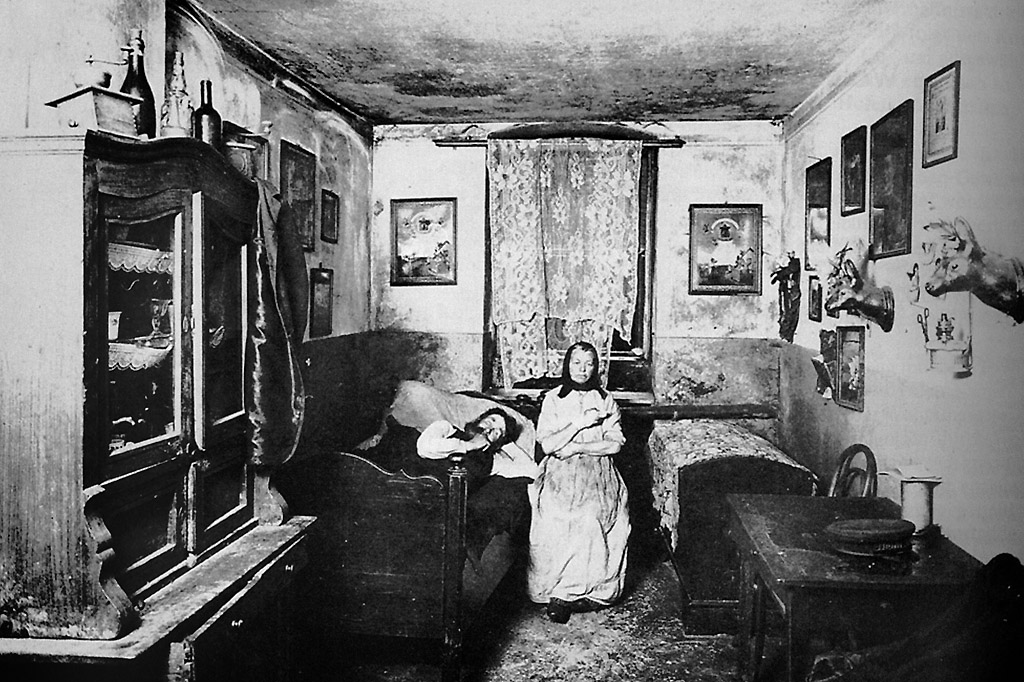Berlin > Housing shortage
Berlin suffered a chronic lack of housing at the beginning of the 20th century, caused by the consequences of the First World War, a deprived post-war economy and ongoing migration from the countryside to the city. Conditions were often dire, especially in the workers' districts. A single room in an apartment was only considered overcrowded when it had five occupants. Larger apartments were often shared by several families. Cellars and attics doubled as living space and were rented out. Home-based work was not uncommon, as children or elderly grandparents helped to raise money for rent and food.
At the time, the bulk of Berlin residents lived in tenement blocks, especially in the workers' districts. These blocks became more crowded as layers of wings and inner courtyards were added one by one. The hygiene for common tenants is difficult to imagine today: around 1920, nine out of ten apartments did not have private bathrooms, as toilets in the courtyards or stairwells were shared by several families and residents. Heating came from stoves, as central heating was unheard of in these simple quarters. For the very poor, special living arrangements were adopted for "sleepers" or "dry dwellers".

